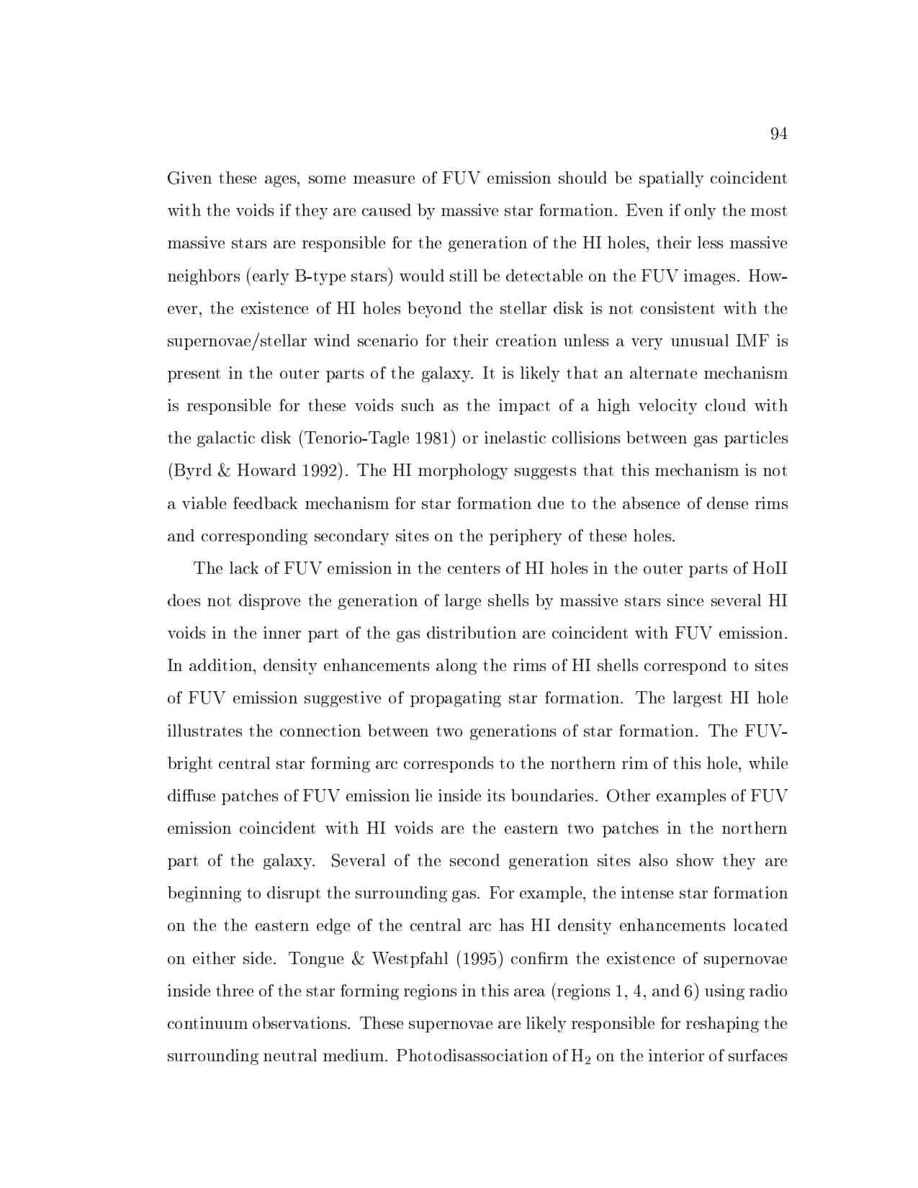Astronomical Applications Department, U.S. Naval Observatory thesis Page 108

94
Given these ages, some measure of FUV emission should be spatially coincident
with the voids if they are caused by massive star formation. Even if only the most
massive stars are responsible for the generation of the HI holes, their less massive
neighbors early B-type stars would still be detectable on the FUV images. How-
ever, the existence of HI holes beyond the stellar disk is not consistent with the
supernovae stellar wind scenario for their creation unless a very unusual IMF is
present in the outer parts of the galaxy. It is likely that an alternate mechanism
is responsible for these voids such as the impact of a high velocity cloud with
the galactic disk Tenorio-Tagle 1981 or inelastic collisions between gas particles
Byrd & Howard 1992. The HI morphology suggests that this mechanism is not
a viable feedback mechanism for star formation due to the absence of dense rims
and corresponding secondary sites on the periphery of these holes.
The lack of FUV emission in the centers of HI holes in the outer parts of HoII
does not disprove the generation of large shells by massive stars since several HI
voids in the inner part of the gas distribution are coincident with FUV emission.
In addition, density enhancements along the rims of HI shells correspond to sites
of FUV emission suggestive of propagating star formation. The largest HI hole
illustrates the connection between two generations of star formation. The FUV-
bright central star forming arc corresponds to the northern rim of this hole, while
di use patches of FUV emission lie inside its boundaries. Other examples of FUV
emission coincident with HI voids are the eastern two patches in the northern
part of the galaxy. Several of the second generation sites also show they are
beginning to disrupt the surrounding gas. For example, the intense star formation
on the the eastern edge of the central arc has HI density enhancements located
on either side. Tongue & Westpfahl 1995 con rm the existence of supernovae
inside three of the star forming regions in this area regions 1, 4, and 6 using radio
continuum observations. These supernovae are likely responsible for reshaping the
surrounding neutral medium. Photodisassociation of H
2
on the interior of surfaces
